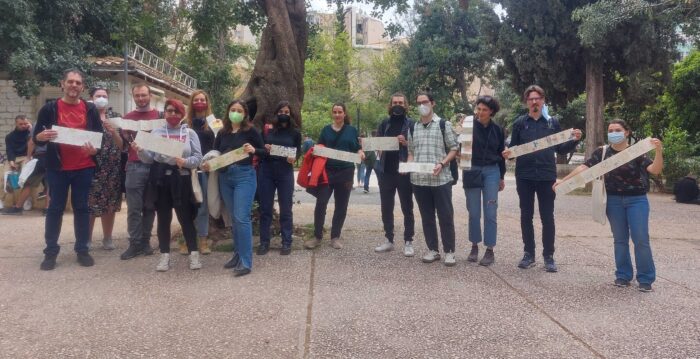
GRAPHIC WANDERINGS: FINDING STORIES IN URBAN SPACE reporting
Report by Tânia A. Cardoso
There is more to the practice of walking in the city than a passive movement, simply dictated by the external stimuli of the city. To Rebecca Solnit (2001: 16): “The rhythm of walking generates a kind of rhythm of thinking, and the passage through a landscape echoes or stimulates the passage through a series of thoughts. This creates an odd consonance between internal and external passage, one that suggests that the mind is also a landscape of sorts and that walking is one way to traverse it”.
When drawing while walking the city, one’s wanderings through the streets match their steps with their surroundings in a constant response movement between their senses, feelings, and memories. The constitution of these close encounters in urban space is simultaneously recreated on paper. Original plans of paths through the city are usually conditioned by interesting textures, sounds, smells and other strong signals and factors such as feelings of security, thirst, hunger, bathroom needs and muscular pains.
Starting at the Netherlands Institute at Athens, we walked a path together with our sketchbooks through the city of Athens until our endpoint, Klafthmonos Square, Comicdom Con 2022 artist’s alley location. We focused particularly on exploring urban space through close observation in a mobile and creative way based on playful psychogeography and graphic journalism methods.
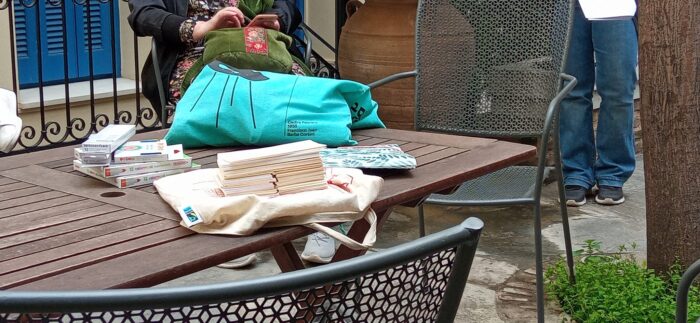
Walkshop, 16 April 2022
Participants created a rhythmic succession of movement and pauses as something grabbed their attention while scanning near and far for elements in the urban landscape and for (hi)story layers. Slowing down or speeding up (prolonging the drawing or not) depended on our senses and time (or lack of it). In this sense, our collective sense of place was in constant becoming through our movements in urban space and in our drawn creations.
With the help of Nicholas Karachalis, we explored the streets of Plaka and Psyri. We explored how to closely observe urban space through walking; to find stories in the city through our senses and memories; and to translate these stories and mappings into the drawing. We engaged with three main questions. First, what happens between points A and B that we cannot see on a map? What layered presences and absences can we discover in urban space? And finally, how can we use the language of comics to reveal these stories and sensations to others?

Walkshop, 16 April 2022
The aim of this walkshop was not to present a single and definitive answer to these questions but to have the participants engage with urban space through a different methodology and experiment. Through this playful walkshop, I hope to have shifted attention and brought awareness to questions related to urban issues and reportage art, along with the importance of aesthetic expression and storytelling in revealing these urban stories to others.
Each participant achieved a different result. Each sketchbook tells a personal story and focuses on different aspects of our collective walk and our individual perception of these Athens neighbourhoods. Some participants focused on interesting details; others on urban elements that reminded them of personal memories; others on the path, using it as a connecting thread between different aspects of space; others used colour as an expressive method to convey sensations and feelings. I, for example, focused on sounds that shifted from loud to quiet, nuisance to pleasant. The aim was to experiment with following our senses and intuition letting serendipity draw our attention in space. Every participant was heavily engaged in using the materials and conditions they had to reveal and articulate their sensibilities and experiences of being -in and -with the city of Athens through the drawings they created.


Sylvain Adam, walkshop drawings, 16 April 2022

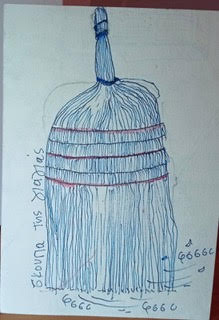
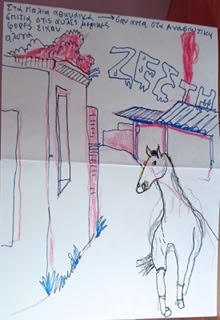
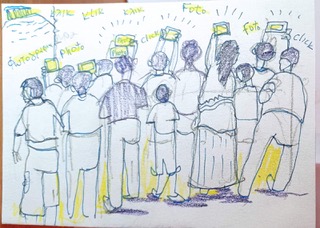
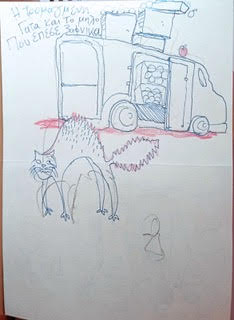
Vagelis Kolotsios, walkshop drawings, 16 April 2022

Tânia A. Cardoso, walkshop drawings, 16 April 2022

Photo author?, walkshop, 16 April 2022
Again using Solnit’s (2010: 8) words, this time in Infinite City: A San Francisco Atlas, “while my story is mine, my map of San Francisco is also potentially yours”. I end this short text by suggesting that experiences of mapping through drawing such as these resonate with the collective meaning of the city we draw. They perform affect. The city of Athens affected us during the walkshop and the drawings we created will (when shared) affect others. This means that through these drawings and stories we generated different portrayals of the same city of Athens. Although based on sensorial practices and personal experiences, sometimes half-imagined, these drawings become a sort of individual testimony that deeply resonates with collective memories and experiences.
Solnit, Rebecca. Infinite City: A San Francisco Atlas. University of California Press, 2010.
—. Wanderlust: A History of Walking (e-Book). Penguin Books, 2001.
